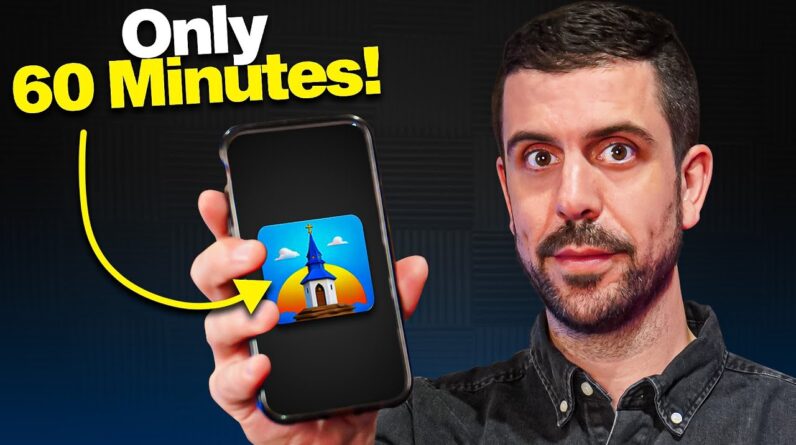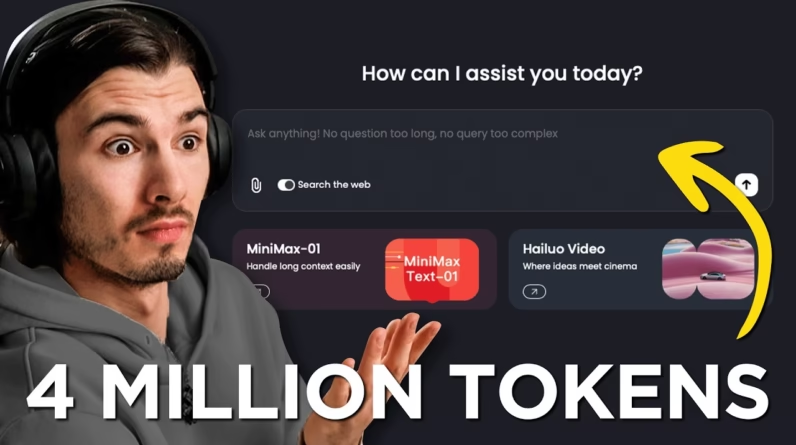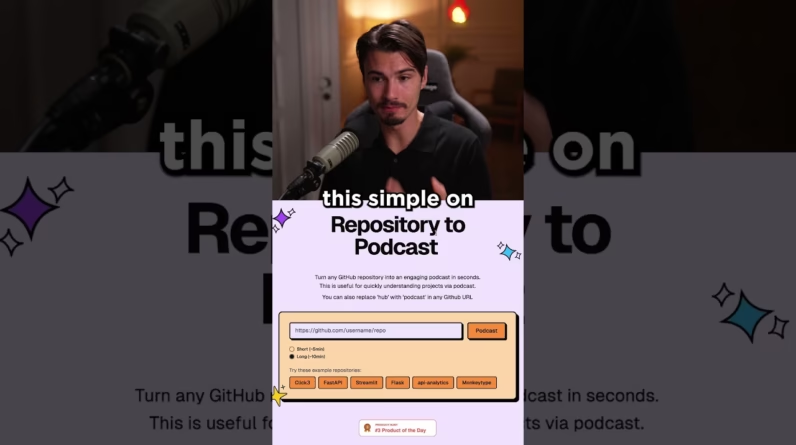
In a whirlwind of innovation, Christian Peverelli showcases how you can harness the power of AI to create a fully functioning Church app in just 60 minutes. By utilizing tools like VZ for designing user interfaces and Cursor for code manipulation, he breaks down the process into manageable steps, demonstrating that anyone can embark on their app-building journey with a little guidance and the right resources.
This article explores the journey from concept to completion, tackling challenges along the way, such as setup hiccups and code integration. You’ll see firsthand how AI tools can simplify development, making it accessible for beginners. Whether you’re curious about no-code platforms or eager to enhance your coding skills, there’s plenty of insight and encouragement ahead.
Table of Contents
I Built An ENTIRE App in 60 Minutes Using Only AI

Introduction to the Project
Objective of the App
Have you ever thought about how quickly you could bring an application to life? In this project, your objective is to build a complete Church App that includes features such as donations, events, and many more—all within just 60 minutes using innovative AI tools. With no coding experience required, this endeavor showcases the potential for rapid development thanks to intuitive no-code platforms and AI.
Overview of the App Features
The Church App aims to offer a user-friendly experience, providing essential functionalities like easy navigation to events, a donations page, and a visually appealing home page. Users will be able to interact with various core features, including event subscriptions, donation management, and a calendar view of upcoming activities—all generated using AI and designed for optimal user engagement.
Meet Christian Peverelli
Background in No-Code Development
You may have heard of Christian Peverelli, a passionate advocate for the no-code movement through his platform WeAreNoCode. His goal is to empower individuals, irrespective of their technical background, to harness the capabilities of intuitive development tools. Through his journey, Christian has explored various technologies, revealing the power of no-code solutions in creating functional applications without intricate programming knowledge.
Experience with AI Tools
Christian’s experience extends to the realm of AI tools, which have revolutionized the way applications are built. By leveraging AI, Christian demonstrates how one can automate many aspects of development, making the process quicker and more efficient. His latest challenge was to build a functional church application in a short time frame, highlighting the effectiveness of AI tools in the field of development.
Key Tools and Technologies
VZ: Designing UI/UX with AI
VZ is a cutting-edge tool that allows you to create stunning UI/UX designs using straightforward AI prompts. With VZ, you can simply instruct the tool to generate specific elements for your application, whether that’s a home page, donation page, or event calendar. The user interface is intuitive, enabling you to visualize changes in real time, which makes the design process both engaging and user-friendly.
Cursor: Code Generation and Manipulation
Cursor is another amazing tool at your disposal, functioning as a code editor that integrates AI for code generation and manipulation. It’s like having a coding partner who can interpret your instructions and seamlessly implement them into functioning code. This tool allows you to translate designs from VZ into working application code, streamlining the development process.
Other Tools and Resources
Beyond VZ and Cursor, a variety of other tools and resources make building applications easier than ever. Resources like templates, community forums, and tutorials can offer the guidance you need while exploring the horizon of no-code development. These tools collectively enhance your ability to design, code, and deploy an application quickly and efficiently.
Initial Setup
Creating a Project in VZ
To get started with your app, the first step is creating a project in VZ. Simply navigate to the platform, and within a few clicks, you can initiate your project. You’ll find an interface that welcomes you to start crafting your design using simple text prompts. This setup ensures that you can focus on your application’s vision without getting bogged down in technical details.
Designing the App Structure
Once your project is created, it’s time to lay out the app’s structure. With intuitive prompts, you can specify that you want to create a Church App focused on donations and events. VZ allows you to visualize the initial app structure, which makes it easier to see how the various components relate to one another. Taking this organized approach ensures that nothing essential gets overlooked.
Defining Key Features
Defining the key features of your app is a critical step in the design process. By identifying what functionalities are most important—such as event management and donation processing—you can tailor your prompts to ensure that VZ generates everything you need. Prioritizing these features early on shapes the overall experience for users and helps maintain focus throughout the development process.
The Building Process
Generating Code with Cursor
Once the UI/UX design is complete in VZ, the next pivotal stage involves using Cursor to generate your app’s code. This process is remarkably straightforward. You can copy the design elements created in VZ and paste them into Cursor, where the tool will turn your visual designs into a working codebase. With AI-powered suggestions, you can further refine and improve your code as you go, ensuring that your application remains up-to-date and functional.
Creating Home Page and Core Features
With the basic framework in place, you can begin developing your home page and core features. By using simple commands, Cursor can help you create essential functionalities like user accounts, navigation links, and interactive elements. Each feature can be customized to fit the distinct needs of your Church App, making this step both crucial and rewarding.
Customizing UI Elements
After establishing core features, it’s time to focus on aesthetics—how your app looks and feels. Utilizing customised prompts in Cursor, you can tweak colors, fonts, and layouts to create a cohesive brand experience. Each adjustment enhances user enjoyment and engagement, ensuring that your app doesn’t just function well but looks good doing it.
Challenges and Resolutions
Setup Issues with Cursor
Even with impressive tools like VZ and Cursor, challenges are bound to arise. During the setup phase of Cursor, many users find themselves encountering issues such as installation errors and missing packages. You might need to spend some extra time troubleshooting these issues before you can proceed with your app-building journey.
Dependency and Configuration Problems
As you continue to develop your application, you may face dependency and configuration problems. These are common when integrating various libraries and tools. Solutions like using package managers can often resolve these issues, but they may require some additional time and patience on your part as you get accustomed to the intricacies of your tools.
Time Spent on Troubleshooting
It’s essential to recognize that troubleshooting is part of the development process. You may find yourself spending valuable minutes—or hours—working through errors and resolving conflicts. This aspect, while sometimes frustrating, is what leads to a more polished and professional final product.
Deployment Techniques
Setting Up Replit for Deployment
Once your app is built, the next exciting step is deployment. Replit is a fantastic platform that offers straightforward deployment options for web applications. You can set up your app on Replit with just a few clicks, making it reachable for your intended audience without convoluted procedures.
Handling Deployment Keys
When deploying your app, you’ll often need to manage deployment keys. These keys help ensure secure access to necessary resources, such as databases. Configuring these keys can seem daunting, but with clear instructions, you will find that handling these security measures becomes manageable.
Using Replit Agents for Software Deployment
One of the standout features of Replit is its Replit Agents. These agents provide streamlined solutions for building and deploying software seamlessly. They automate many mundane aspects of deployment, allowing you to focus on creating an exceptional app worthy of your users’ attention.
User Interface and User Experience
Implementing Functional Designs
An effective user interface is crucial for your app’s success. By implementing functional designs, you ensure that users can navigate your app effortlessly. This means considering placement, colors, and interactivity to provide an intuitive experience that encourages user engagement.
Optimizing for User Engagement
User engagement is not only about aesthetics but also about functionality. You can optimize your app by incorporating features like notifications for events, easy donation processes, and an interactive user dashboard. Each of these components plays a significant role in retaining users and encouraging repeat visits.
Connecting to Payment Processors
To manage donations effectively, connecting your app to a payment processor is essential. This integration should be seamless and secure, allowing users to make donations effortlessly. You can use established payment APIs that simplify this process, ensuring that your app is robust and user-friendly.
Community Engagement and Feedback
Inviting Suggestions from Viewers
Building a user-centric app means being open to feedback. Throughout your development process, it’s a great idea to invite suggestions from viewers. Encourage them to leave comments on features they would like to see, or any challenges they have faced with similar apps. This invites engagement and makes users feel valued.
Integrating Community Ideas into the App
Once you’ve gathered feedback, consider how you can integrate community ideas into your app. By prioritizing user suggestions, you create a product that genuinely reflects the needs and desires of its intended audience. This level of engagement can cultivate loyalty and trust among your user base.
Building a User-Centric App
Before concluding your development cycle, ensure your app is genuinely user-centric. This means refining features based on feedback, enhancing user journeys, and guaranteeing that your app exceeds user expectations. Creating a user-centric design leads to better retention and satisfaction rates.
Conclusion
Summarizing the Experience
Throughout this project, you’ve successfully built a Church App within a tight 60-minute deadline using innovative AI technology. By leveraging tools like VZ for design and Cursor for coding, you showcased how quickly and efficiently applications can be developed today. Your ability to navigate challenges and implement community feedback is just as significant to this success.
The Impact of No-Code and AI Tools
The impact of no-code and AI tools is undeniable. They allow anyone, regardless of coding expertise, to bring their ideas to life. This democratization of application development is reshaping how we approach tech projects, making it accessible and encouraging creativity.
Encouragement for Aspiring Developers
For those aspiring to create their projects, embrace the journey with a beginner’s mindset. Remember, progress is more important than perfection. The tools available today enable you to experiment and enhance your skills, transforming visions into reality.
As you embark on your journey in no-code development, remember that the possibilities are virtually endless. Dive in, explore, and don’t hesitate to let your creativity shine—after all, with the right tools, you just might surprise yourself with what you can accomplish!







